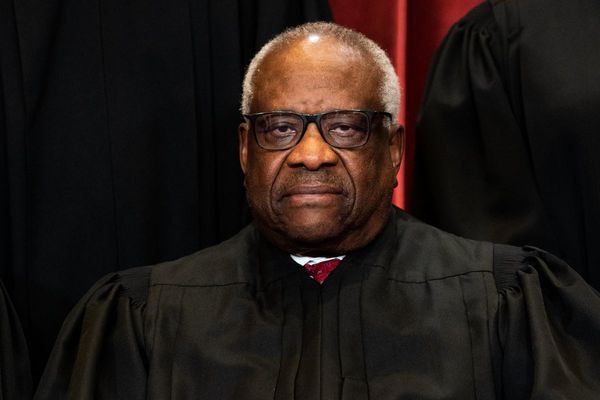The next time you gaze at the sheer granite cliffs of Yosemite National Park's El Capitan or marvel at the trees in the Mariposa Grove, you can thank the quiet persuasion of John Muir. Without him, such national treasures wouldn't look the same — or even be there.
Muir (1838-1914), though, didn't simply deliver persuasive speeches to win support for conservation. He showed others the beauty he saw. Then people in power, themselves, saw treasures worth saving.
Consider in 1903. President Theodore Roosevelt was touring the nation to be elected for a full term. An avid outdoorsman, Roosevelt stopped in California's Yosemite Valley. He spent a couple of snowy nights camping with Muir, the nation's foremost naturalist. That's all it took for Muir to win over the president.
"Lying out at night under the giant sequoias had been like lying in a temple grander than any human architect could by any possibility build," Roosevelt recalled.
Muir used this bonding experience to gain a foothold in one of the nation's grandest conservation efforts.
"Camping with the president was a remarkable experience and I fairly fell in love with him," Muir reported. While this would be his ultimate lobbying opportunity for wilderness protection, Muir had already gained enormous influence with leaders and the public through his writing and speeches.
Find Powerful Allies Like John Muir Did
Inspired, Roosevelt would sign bills to create five national parks, 18 monuments, 55 bird and wildlife refuges and 150 national forests.
"Muir understood nature's immense value in providing both for man's material and spiritual needs, and well before we could conceive of climate change, preached the need for the booming nation to protect its natural resources and spectacular wild lands," said Dean King, author of "Guardians Of The Valley: John Muir And The Friendship That Saved Yosemite."
Build Resilience With Adversity
Muir was born in 1838 in Scotland. There he fell in love with the countryside before his family moved to a Wisconsin farm when he was 10. He was a big reader from the earliest age. He memorized much of the Bible. But the threat of receiving a whipping from his father if he failed recalling Bible passages also inspired him.
Muir also loved Scottish poetry and history, as well as science. He invented a machine to drop the foot of his bed at 1 a.m. This jolt would wake him up so that he would have several hours of reading before working in the field from dawn to dusk.
A series of clashes with his father drove him from the nest at 22. And he paid his own way at the University of Wisconsin-Madison for several years. There he studied everything from geology to chemistry.
Muir hoped to return to earn a degree. But he invested his savings in a broom factory, where he was working, that burned down. He then became a supervisor at a wagon wheel factory in Indianapolis. He improved their machines and processes. But in 1867 a tool he was using punctured his right eye and he lost sight in both eyes for six weeks.
"While convalescing, he reflected on his purpose in life and decided to pursue the study of nature," said King. "He set off on a walking journey of 1,000 miles in the South that included an attack by an alligator and catching malaria. Having heard so much about the wilderness of the West, he booked passage on a ship that landed him in San Francisco."
Work Hard To Improve Communication Skills
Muir walked 250 miles from Oakland to Yosemite Valley with a friend in 1868. And he later wrote that seeing it for the first time caused him to be "overwhelmed by the landscape, scrambling down steep cliffs to get a closer look at the waterfalls, whooping and howling at the vistas."
For the next 12 years before he married and began managing his wife's family farm, he survived with odd jobs, such as herding sheep and guiding visitors. He also wrote for what would become Century Magazine. His editor, Robert Johnson, said after his first view of Yosemite, "Only the pen of John Muir has ever approached an adequate reflection of the feeling of a sensitive person in that Holy of Holies."
Muir was a great storyteller. His description of a snowstorm on Mount Shasta, Calif. was "a wilderness thriller of defying death, a survival tale of extreme weather, unearthly landscapes, and superhuman grit, that kept eyeballs fused to the pages," said King.
But Muir hated the writing process. And his secretary reported that "each sentence, each phrase, each word, underwent his critical scrutiny not once, but 20 times, before he was satisfied." Johnson's persistent guidance resulted in the publication of many articles and books, "demonstrating the everlasting power and persuasiveness of insightful observations and passionate beliefs," said King.
Muir and Johnson lobbied Congress in person. And their arguments for protection of Yosemite, as well as Sequoia (which had the largest and oldest trees in the world) and Kings Canyon to its south, resulted in these being designated national parks in 1890 (there are now 63).
Leave A Legacy Like All Great Leaders
Muir, though, knew he could do even more to protect some of the young country's natural treasures. He organized grassroots efforts that brought about the U.S. National Forest Reserve Act of 1891 (there are now 132 million acres of national forests). He suffered losses, too. His team lost the battle to stop the damming of the Tuolumne River in the Hetch Hetchy Valley north of the Yosemite Valley.
In 1892, he cofounded the Sierra Club and took the role as its first president. Sierra Club lobbied political leaders to end destructive sheep grazing, excessive logging and mining. He also worked to stop overdevelopment in and around the most important and beautiful wilderness areas.
Find Larger Goals
Muir went on a scientific exploratory cruise to Alaska with railroad mogul E.H. Harriman in 1899. The two worked together to pass conservation legislation. In the same year, he also climbed Mount Rainier, which became the fifth national park.
Muir is less known for his pioneering scientific thinking. But his detailed geological observations showed the Yosemite Valley had been created by the movement of glaciers, not an earthquake, which was the conventional wisdom at the time.
Muir died of pneumonia in California in 1914 at age 76. California created John Muir Day on April 21, first celebrated in 1989. Only two people have been so honored: Ronald Reagan (Feb. 6) and Harvey Milk (May 22).
"Muir had a great gift for observation and analysis, whether he was using it for reconfiguring a manufacturing line or understanding the processes of nature, but his superpower was his faith, which gave him the strength to take on industrial titans and hostile politicians alike, and to always believe that right would prevail," said King. "His confidence and diligence inspired those by his side to work for their causes all the harder."
John Muir's Keys
- Naturalist who played a key role in the creation of U.S. national parks and national forests.
- Overcame: Tremendous opposition to protecting the most important wilderness areas.
- Lesson: "Everybody needs beauty, as well as bread, places to play in and pray in, where nature may heal and give strength to body.







